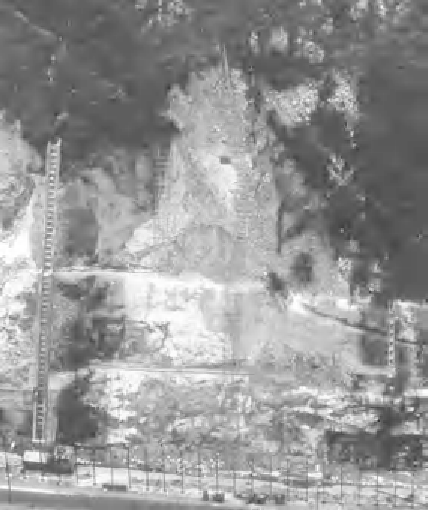Geology Reference
In-Depth Information
Trial pit
Access ladders
Dyke 1
Figure B3-5.3 Close up of left
flank of landslide with two dykes, the main one dipping out of the slope and a
-
A series of triaxial and direct shear tests were carried out. Back-analysis demonstrated that the strength of
intact material was too high to have permitted failure in the absence of adverse groundwater pressures.
-
Adverse discontinuities were recorded in the second largest failure but were not persistent.
Develop the mechanism model
Mechanism?
Apparently through the intact weathered rock for the main
failure; relict discontinuities may have reduced the mass
strength for the second failure.
What triggered the movement?
The failures were associated with intense rainfall, although
timing was not known precisely. Vegetation above the slope was
flattened towards the slope, suggesting considerable surface
ow.
But measured and observed water table
was below failure surface?
Nevertheless, back analysis suggests that failure was impossi-
ble without adverse positive water pressure.
So the explanation is probably the following.
Predisposing factors
Weathered granite with cross-cutting dolerite dykes. There would be a permeability contrast, the dykes
acting as aquitards.
Mechanism
1.
The geological model of the main failure is shown in
Figure B3-5.4.
2.
The main landslide was probably caused by direct infiltration, during or shortly after the intense rainfall.














